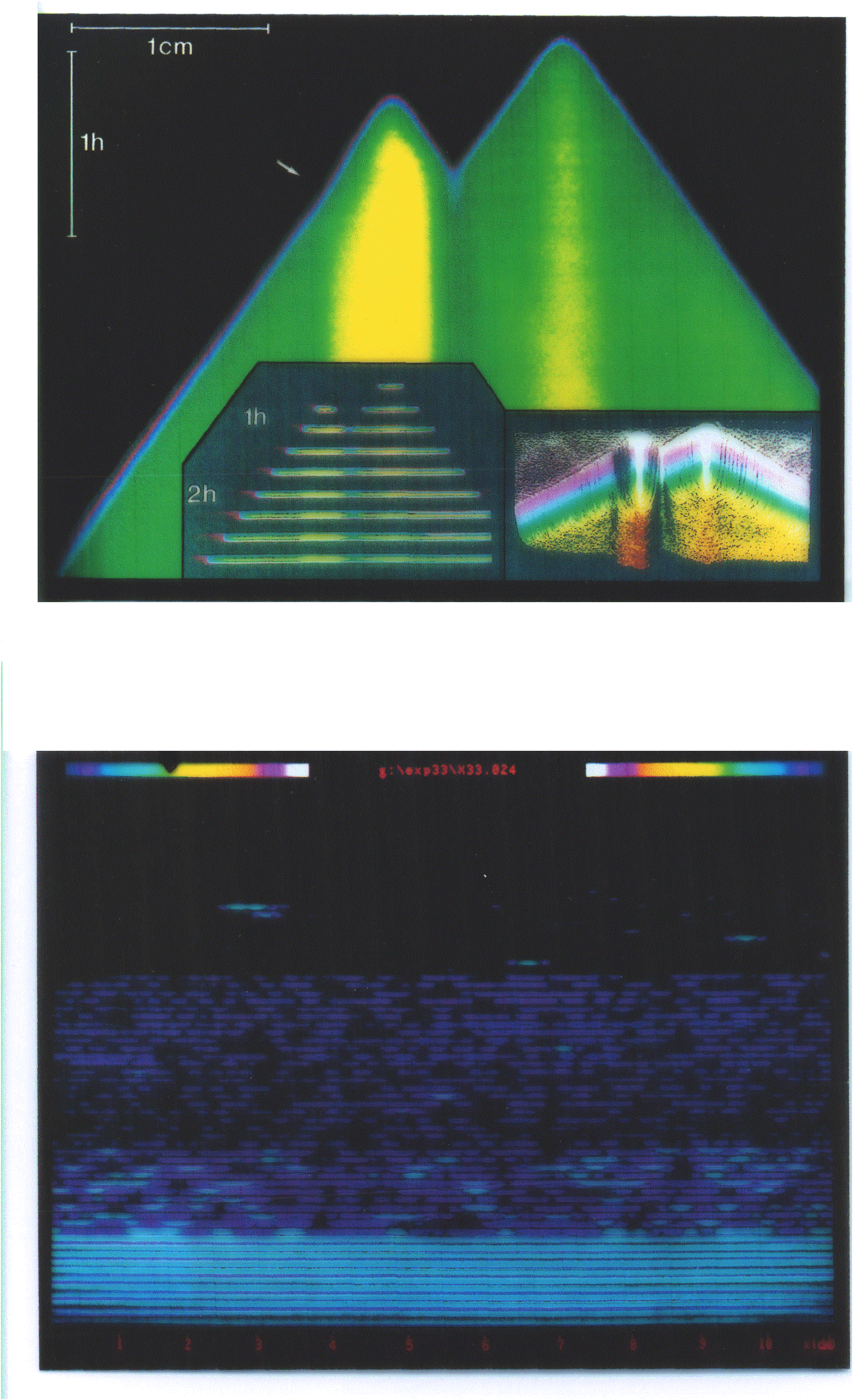Since the early 80's at the MPI Göttingen McCaskill (and since the early 90's BioMIP) has been pursuing a synthetic approach to understanding the physico-chemical basis of biological systems. This field could be entitled organic physics: since it employs techniques from the area of chemical physics to aid the synthetic approach to chemical systems, which extends organic chemistry to the next higher level of integration : i.e. systems chemistry. This field has a clear relation both to organic computing and synthetic biology (terms coined more recently by von der Malsburg and Endy), and is more process oriented than supramolecular chemistry.
At the IMB in Jena in the 90's, we developed synthetic biochemical evolving systems and built artificial spatial environments using microflluidics to control their evolution. We also built reconfigurable hardware to simulate molecular evolution as strings of bits diffusing in massively parallel electronic hardware, which we could reconfigure to represent different systems. We used the same FPGA technology to control novel single molecule detection hardware for monitoring real synthetic biochemical systems, and to test automata theories of evolutionary self-organization.
At the National Research Lab for IT (GMD), around the turn of the millenium, we investigated bootstrapping self-organization (in the spirit of John von Neumann) and began designing "wet" DNA processing systems, benchmarking our progress in programming such systems using the combinatorially hard problem of Maximal Clique. We integrated a light programmable selection module working in a continuous flow microsystem using magnetic beads, and showed how it could be used to design programmable biochemical systems and for directed evolution. We also perfected our reconfigurable hardware platform (MereGen) and developed analytical models of stochastic spatial evolutionary self-organization (PRESS).
In 2004, we joined the Ruhr University (after a brief interim hosted by the Fraunhofer Gesellschaft in the multidisciplinary labs we built up at the GMD) to take the next step in integrating self-organization with information processing, by designing microsystems for bridging the gap to the first chemical living systems. We have developed the concepts of individual cell micro-complementation and electronic genomes for artificial cells and have designed an omega machine to program the self-organization of combinatorially complex chemical systems towards living cells (PACE Project). At the same time we have been developing novel simulation techniques to study mesoscale self-assembly and self-organization and have investigated the power of self-assembly for evolutionary problem solution. We applied our mesoscale simulation tools to complex combinatorial protein sorting in the endocytosis of liver cells, which represent another grand challenge to understanding rich spatial chemical self-organization.
From 2008-2014, we focussed our synthetic systems approach on electronic lab-on-a-chip systems to research the construction of
- an electronic chemical cell (ECCell)
- an artificial chemical production matrix based on chemtainers (MATCHIT)
- DNA libraries (CADMAD)
as well as preparing a roadmap for the field (COBRA).
In 2012, the next major step in the development of synthetic systems was taken, to research autonomous electronic-chemical hybrid agents at microscopic scales (MICREAgents). The biggest weakness of lab-on-a-chip (LOC) systems has long been the interfacing required for their operation, and so a radical change in thinking seems fruitful: to explore systems that do not require any chemical or electronic hardware connections. While pourable computing has been identified as a computing goal, and autonomous sensor nets have also been proposed using wireless technology, both ideas have fallen short of microscopic scales (which start at 100µm). MICREAgents combines ideas from local self-assembly with electrochemical and electrokinetic control and sensing, including supercar powering to achieve autonomous operation of smart microparticles as chemical agents.


